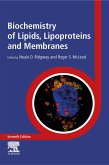Glyceraldehyde-3-Phosphate Dehydrogenase (GAPDH): The Quintessential Moonlighting Protein in Normal Cell Function and in Human Disease examines the biochemical protein interactions of the multi-dimensional protein GAPDH, further considering the regulatory mechanisms through which cells control their functional diversity.
This protein's diverse activities range from nuclear tRNA export and the maintenance of genomic integrity, to cytoplasmic post-transcriptional control of gene expression and receptor mediated cell signaling, to membrane facilitation of iron metabolism, trafficking and fusion.
This book will be of great interest to basic scientists, clinicians and students, including molecular and cell biologists, immunologists, pathologists and clinical researchers who are interested in the biochemistry of GAPDH in health and disease.
This protein's diverse activities range from nuclear tRNA export and the maintenance of genomic integrity, to cytoplasmic post-transcriptional control of gene expression and receptor mediated cell signaling, to membrane facilitation of iron metabolism, trafficking and fusion.
This book will be of great interest to basic scientists, clinicians and students, including molecular and cell biologists, immunologists, pathologists and clinical researchers who are interested in the biochemistry of GAPDH in health and disease.
- Contextualizes how GAPDH is utilized by cells in vivo
- Provides detailed insight into GAPDH post-translational modifications, including functional diversity and its subcellular localization
- Includes forward-thinking exposition on tough topics, such as the exploration of how GAPDG performs functions, how it decides where it should be present and requisite structural requirements
Dieser Download kann aus rechtlichen Gründen nur mit Rechnungsadresse in A, B, BG, CY, CZ, D, DK, EW, E, FIN, F, GR, HR, H, IRL, I, LT, L, LR, M, NL, PL, P, R, S, SLO, SK ausgeliefert werden.



